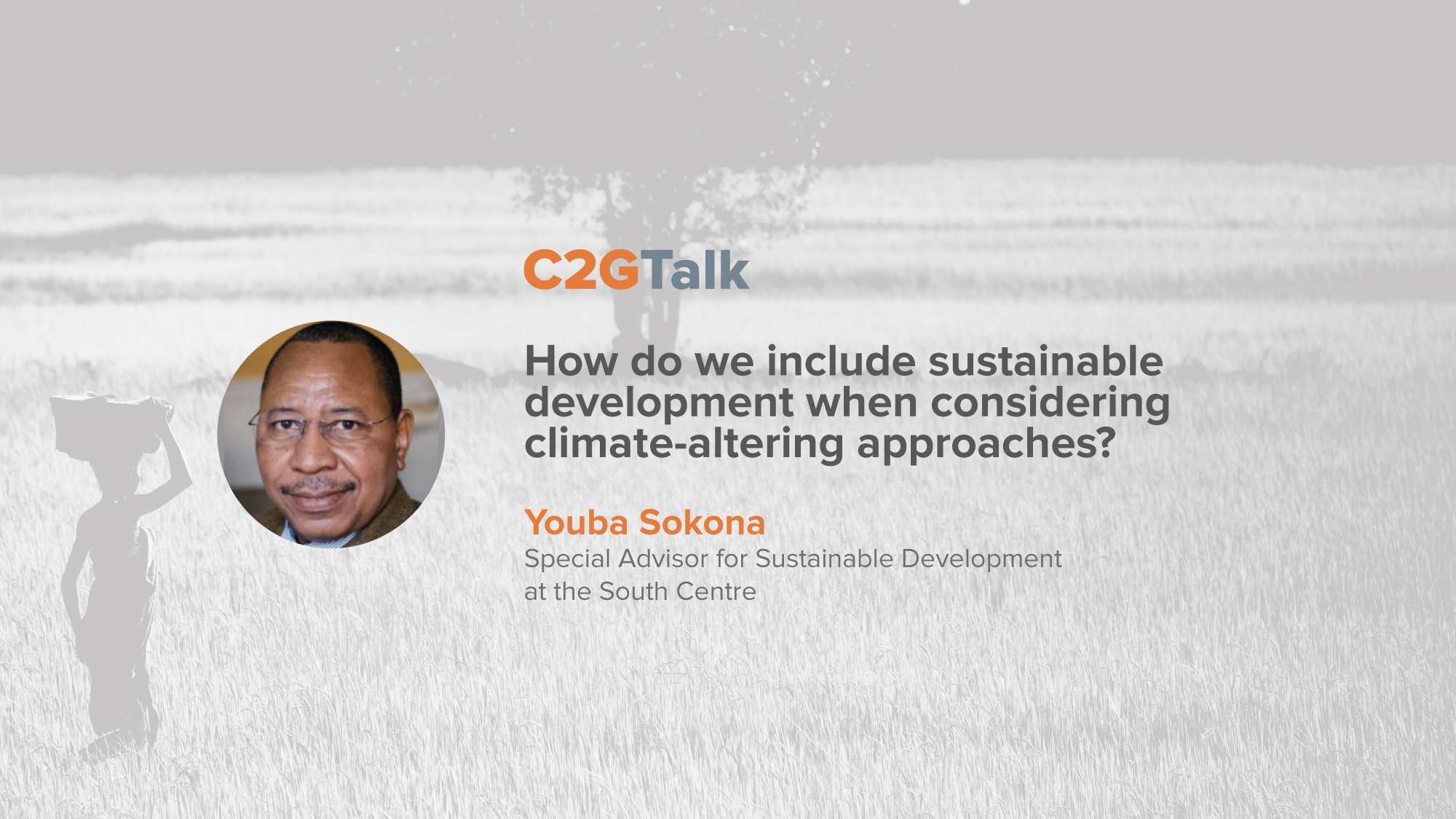What implications could Solar Radiation Modification have for the Sustainable Development Goals?

[The views of guest post authors are their own. C2G does not necessarily endorse the opinions stated in guest posts. We do, however, encourage a constructive conversation involving multiple viewpoints and voices.]
This blog is based on a new research paper published in the journal Mitigation and Adaptation Strategies to Global Change (MITI).
SRM represents a potential novel type of intervention which seeks to limit climate change by reflecting more sunlight back into space, or by enhancing the amount of warmth escaping the Earth’s atmosphere.
SRM encompasses various different methods, of which stratospheric aerosol injection (SAI) in particular has come into focus. This method would involve spraying of sulphur or lime-based particles in the stratosphere, which would scatter a small percentage (1-2%) of incoming sunlight thus keeping some heat away from Earth.
While the potential implications of SRM – positive and negative – are considered to be likely very significant, particularly when applied at global scale, understanding of the many possible interlinked effects is very limited.
There is hardly any practical policy and governance experience that would help people to understand such potential co-benefits and negative impacts, as well as the overall role SRM might play.
To start addressing this knowledge gap, we have reviewed the current state of knowledge on SRM and its implications for the UN Sustainable Development Goals (SDGs) – which represent the best available framework to evaluate desirability of future developments.
Given the complexity and breadth of these objectives, 31 experts from 20 countries with expertise and practical experience in all 17 SDGs were invited to critically review and supplement our initial synthesis.
Weighing up risks in a dangerously warming world
Risks flowing from the application of SRM should therefore be judged in the context of the risks from climate change without SRM.
If global warming is not contained at 1.5°C or well below 2°C, impacts on human well-being and ecosystems could become devastating, and the achievement of all the Sustainable Development Goals (SDGs) would be severely jeopardised.
Any successful use of SRM within a scientifically acceptable range would – if pursued through sufficient global coordination and cooperation – potentially help limit warming and keeping the achievement of other SGDs in reach.
However, the use of SRM could create its own, potentially very significant, risks, which need to be considered within the risk-risk context of climate change.
Temperature is not the only metric
Our study attempts to take a step towards such a broad-based assessment.
We examine to which degree the achievement of each SDG might be influenced by SRM’s effects on the climate system, what physical side-effects could arise from particular forms of SRM deployment, and to what degree particular SRM deployment policies might affect socio-economic, political or even cultural dimensions and vice versa.
Particular emphasis was placed on integrating bio-physical, environmental, social, economic, political and institutional perspectives in the analysis.
We thus developed a preliminary map of potential implications of SRM deployment on the 17 SDGs and identified open questions warranting further attention.
Key Findings
Against the counterfactual scenario of no SRM intervention, the potential implications of SRM implementation strongly depend on three key dimensions and their interaction:
- the atmospheric CO2e concentration pathways,
- the SRM intervention timing and design (choice of materials, intensity, scales, and location of interventions), and
- the adaptive capacity, resilience and general local governance capacities.
All three dimensions are co-determined by environmental and human factors. The potential implications identified for the SDGs are likely to differ strongly depending on the assumed scale of SRM deployment as well as the policy pathways and broader governance contexts.
Positive impacts
We note though that SRM is no panacea. Addressing the root cause of climate change, namely the increasing concentration of greenhouse gases in the atmosphere (which SRM does not achieve) is still an absolute necessity even if SRM may additionally aid limiting change in the climate system and associated impacts and risks.
Negative impacts
In particular, the added complexity and potential for conflict in the global coordination of such interventions, and some additional particle pollution, stand out in their effects on at least nine of the 17 SDGs. These include Goal 6 on “Clean water and sanitation,” Goal 3 on “Good health and well-being,” and Goal 16 on “Peace, justice and strong institutions.”
The latter in particular stresses the need for robust international decision-making, transparent implementation processes and strong institutions, whereby SRM could pose potentially both a challenge and an opportunity.
Further potential impacts are expected for the implementation of Sustainable Development Goal 2 “No Hunger” or Goal 7 “Affordable and Clean Energy”, depending on net effects for plant growth and solar power generation – although there are also positive potential effects on both.
Assigning weight to impacts and interactions
In order to build up breadth and depth in understanding, broad-based assessment metrics that span the SDG dimensions are needed to better explore and discuss the interrelationships.
This includes both qualitative and quantitative integrative analyses of potential risks and benefits of SRM to avoid under- or overestimating effects on the climate system and sustainable development, and to build up a holistic understanding of the risk-risk decisions involved in shaping research and governance.
We hope our article offers a helpful starting point for this long-term endeavour.
Matthias Honegger is Senior Research Associate with Perspectives Climate Research and PhD candidate at the Copernicus Institute for Sustainable Development, Utrecht University.
Axel Michaelowa is Senior Founding Partner at Perspectives and researcher at the University of Zurich. Axel was a lead author of the chapter on international mitigation policies in the fifth and fourth Assessment Reports (AR) of the Intergovernmental Panel on Climate Change (IPCC) and has been participating in the UN climate negotiations since 1994.
Jiahua Pan is Professor of Economics and Director at the Institute of Ecocivilization Studies at Beijing University of Technology, and a Member of IGS (Independent Group of Scientists) co-drafting the Global Sustainable Development Report 2023. Professor Pan has published over 300 papers, articles and books and was IPCC lead author in AR3, 4, and 5 on mitigation.
Related posts:
Implications of Carbon Dioxide Removal for the Sustainable Development Goals
Guest blog by Matthias Honegger, Axel Michaelowa, and Joyashree Roy
Stratospheric aerosol injection could be a painkiller, but not a cure – and more research is needed
Guest blog by Frank Keutsch
How do we include sustainable development when considering climate-altering approaches?
C2GTalk interview with Youba Sokona



